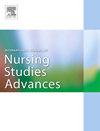Assessing current status and exploring influencing factors and mechanisms of mothers’ discharge readiness for premature infants: A cross-sectional analysis using structural equation modeling
IF 3.1
Q1 NURSING
International Journal of Nursing Studies Advances
Pub Date : 2025-06-27
DOI:10.1016/j.ijnsa.2025.100372
引用次数: 0
Abstract
Background
Prematurity remains a global health challenge, with preterm infants’ immaturity placing significant caregiving demands on mothers.
Objectives
This study aimed to assess mothers’ discharge readiness for preterm infants and explore influencing factors using structural equation modeling to inform discharge preparation plans.
Design
Cross-sectional study.
Settings
Three Level Ⅲ hospitals in western China.
Participants
From July, 2023, to February 2024, 258 mothers of preterm infants were included in the study.
Methods
The Readiness for Hospital Discharge Scale assessed mothers’ discharge readiness. Relevant factors were evaluated using General Information Questionnaire, Self-Rating Anxiety Scale, and Quality of Discharge Teaching Scale. Data were analyzed using SPSS; hypotheses were tested with AMOS.
Results
Mean discharge readiness score was 198.70±29.60. Significant direct effects included gestational age (β=0.31), household income (β=0.13), online learning (β=0.18), bedside learning (β=0.20), anxiety (β=−0.24), and perception of discharge teaching quality (β=0.36). A chain mediation effect was observed among bedside learning, discharge teaching quality, anxiety, and discharge readiness. Gestational age cutoff of 224.5 days (≈32 weeks) was identified for targeting interventions.
Conclusion
Mothers’ discharge readiness for preterm infants was inadequate. Discharge teaching emerges as the most significant target intervention. In clinical practice, emphasis should be placed on guiding mothers of preterm infants with gestational ages <32 weeks. This can be achieved by integrating online study with bedside learning to enhance discharge teaching quality, thereby reducing anxiety levels, promoting mothers’ discharge readiness for preterm infants, and facilitating a smooth transition to home care.
早产儿母亲出院准备现状评估及影响因素与机制探讨:基于结构方程模型的横断面分析
早产仍然是一个全球性的健康挑战,早产儿的不成熟给母亲带来了巨大的照顾需求。目的运用结构方程模型对早产儿母亲的出院准备情况进行评估,探讨影响因素,为早产儿母亲的出院准备提供依据。DesignCross-sectional研究。西部三级Ⅲ医院。从2023年7月到2024年2月,258名早产儿母亲被纳入研究。方法采用出院准备度量表对产妇出院准备度进行评估。采用一般情况问卷、焦虑自评量表和出院教学质量量表对相关因素进行评价。数据采用SPSS进行分析;用AMOS对假设进行检验。结果平均出院准备度评分为198.70±29.60。直接影响因素包括胎龄(β=0.31)、家庭收入(β=0.13)、在线学习(β=0.18)、床边学习(β=0.20)、焦虑(β= - 0.24)和出院教学质量感知(β=0.36)。床边学习、出院教学质量、焦虑和出院准备之间存在连锁中介效应。确定了针对干预措施的胎龄截止时间为224.5天(≈32周)。结论母亲对早产儿的出院准备不足。出院教学成为最重要的目标干预措施。在临床实践中,应重视对32周早产儿母亲的指导。这可以通过将在线学习与床边学习相结合来提高出院教学质量,从而降低焦虑水平,促进母亲对早产儿的出院准备,并促进顺利过渡到家庭护理来实现。
本文章由计算机程序翻译,如有差异,请以英文原文为准。
求助全文
约1分钟内获得全文
求助全文
来源期刊

International Journal of Nursing Studies Advances
Nursing-General Nursing
CiteScore
5.80
自引率
0.00%
发文量
45
审稿时长
81 days
 求助内容:
求助内容: 应助结果提醒方式:
应助结果提醒方式:


